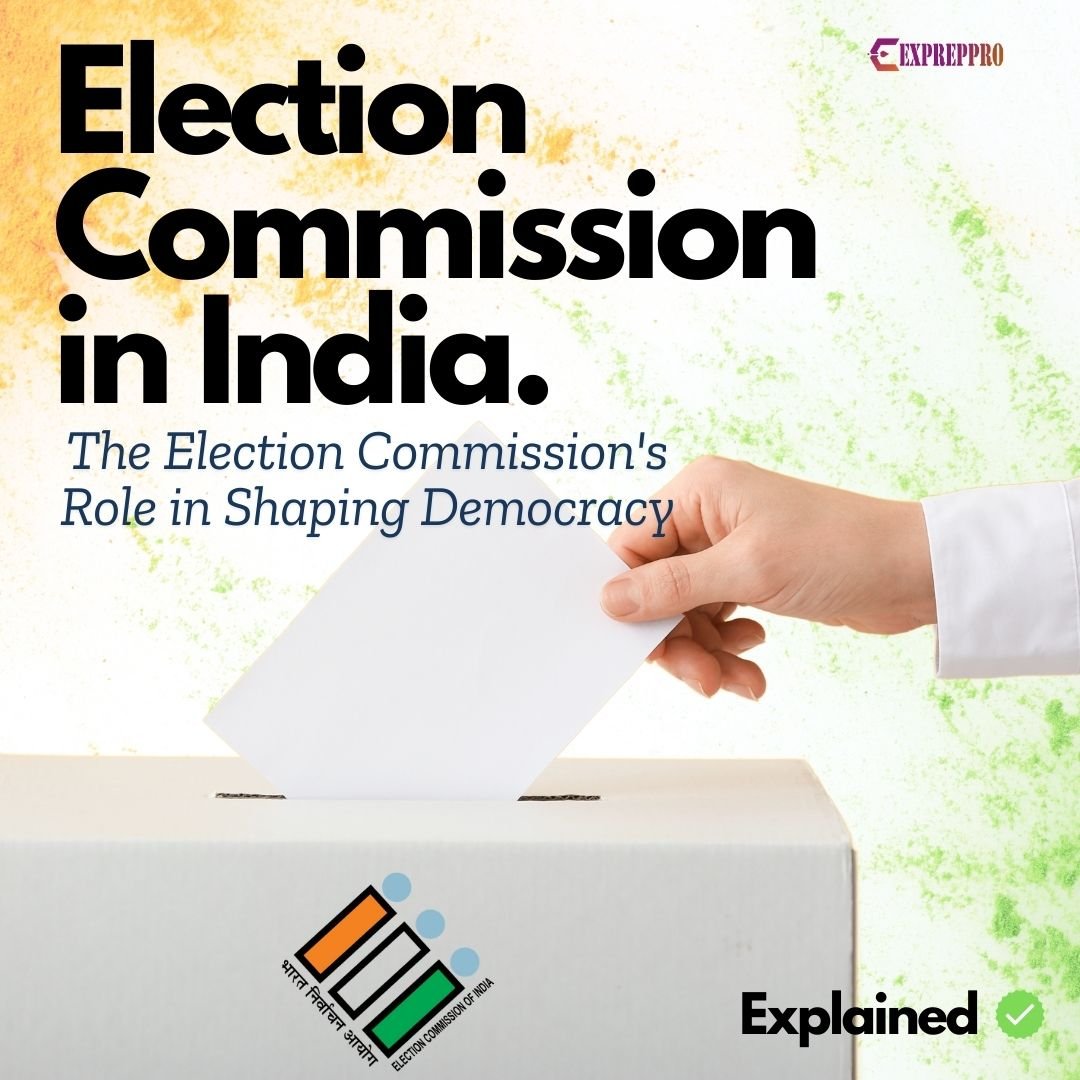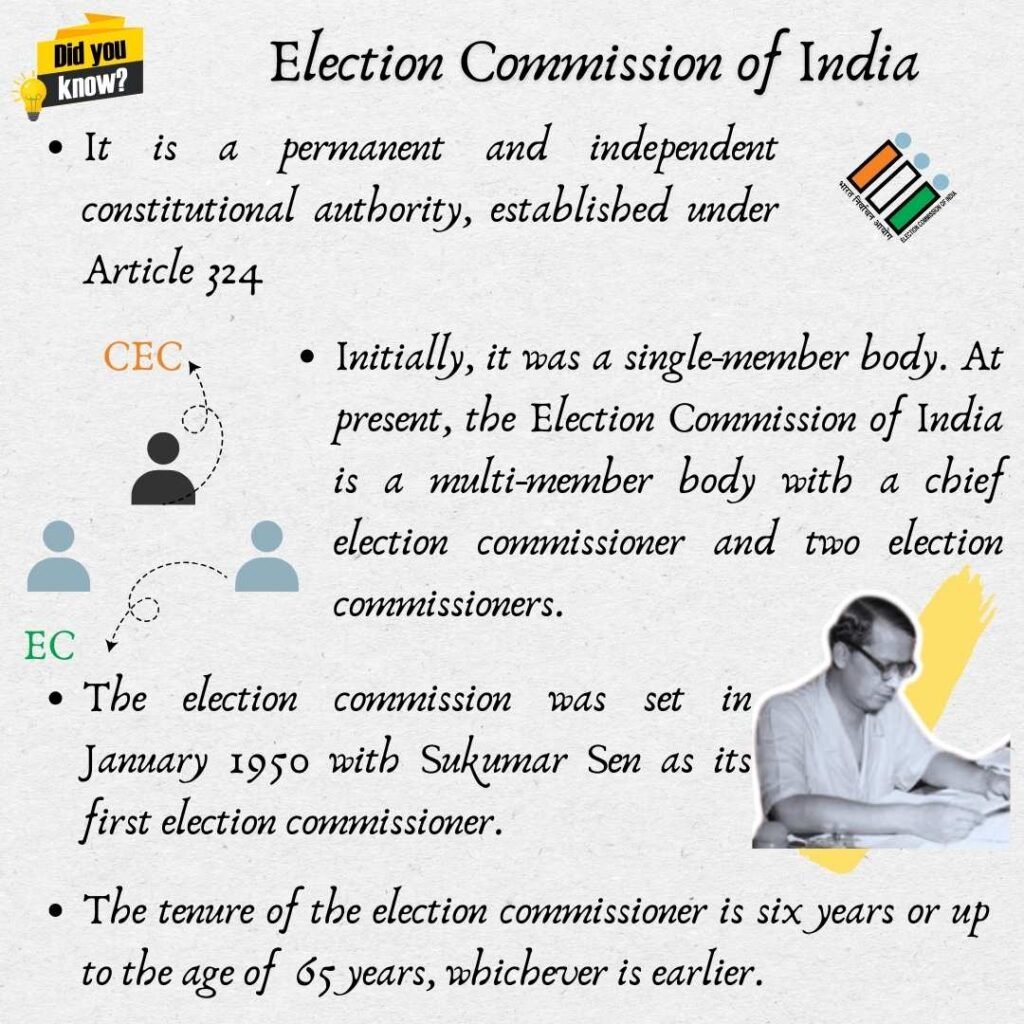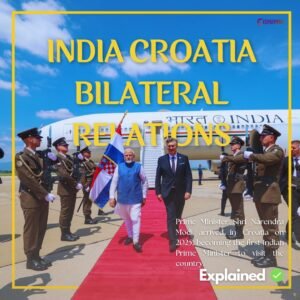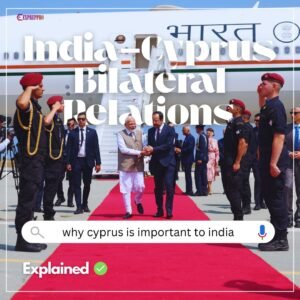
Election Commission of India is the constitutional body responsible for conducting free and fair elections in India, the largest democracy in the world. The Election Commission of India draws its power and authority from the Indian constitution and various rules mentioned in the Representation of the People Act, 1951. In 2025, Election Commission of India celebrated its 75th Year of its establishment.
Election Commission of India: An Introduction
The constitution of India lays down the procedure for the election of the President and the vice president of India.
The procedure for election to the union parliament and the state legislature was left to the lawmakers. At the same time, it laid certain principles.
- Article 325: No provision for communal, separate or special representation and only one electoral roll for every constituency for all elections.
- Article 326: Elections should be conducted on the basis of adult suffrage.
Articles 324 to 325 of the Indian constitution provide for an election commission. The commission has been vested with residual powers pertaining to elections. This measure is to solve any unexpected problems that arise during elections.
The history of the Election Commission of India
The history of the election commission is different because it does not hold a colonial legacy like other institutions like UPSC. It was created after the constitution to represent the democratic values and principles that India needs.
The election commission was set in January 1950 with Sukumar Sen as its first election commissioner (He was appointed in March 1950).
Sukumar Sen was in charge of this newborn organisation along with a herculean task, the successful conduction of election for both Loksabha and 26 state legislatures.
Prime Minister Nehru requested the general election by the spring of 1957, and the election commission completed the heavy job of registering nearly 18 crore voters.
Later, Sen and his new team completed the elections successfully. The elections were held in as many as 68 phases – from October 1951 to February 1952 for 4500 seats (500 for Parliament and the rest for state legislature).

Structure and Composition Of Election Commission Of India
Article 324 of the Indian constitution mentions the provisions regarding the composition of the election commission.
- The election commission shall consist of an election commissioner and other election commissioners.
- When other election commissioners are appointed, the chief election commissioner acts as its chairman.
- The President can appoint regional commissioners if required after consulting the election commission to assist the election commission.
- The conditions of service and tenure of office of the election commissioners and the regional commissioners shall be decided by the honourable President of India and may, by rule determined.
Election Commissioners
At present, the Election Commission of India is a multi-member body with a chief election commissioner and two election commissioners.
As of 16-03-2025, Shri Gyanesh Kumar is the chief election commissioner, and Dr Sukhbir Singh Sundha and Dr Vivek Joshi are election commissioners.
Initially, it was a single-member body with one chief election commissioner, and this arrangement lasted until October 1989.
On October 7, 1989, the President, under Article 324(2), decided to add two election commissioners. On October 16, through a presidential notification, S.S Dhsnos and V.S Sigell were election commissioners with immediate effect. So, from October 16 onwards, it became a three-member body.
Opposition Parties View On Election Commissioners Appointment
Opposition raised a red flag and accused the the Rajiv Gandhi government of trying to cut the power of CEC. Then Chief Election Commissioner R.V.S. Peri Sastri was known to conduct elections strictly by the book.
The issue of the wheel symbol to Janatadal added fuel to their concern and forced them to speak clearly against the change. Janata Dal demanded a wheel symbol with 24 spokes and was objected to by the newly appointed commissioners. Later, the allocated wheel symbol resembled the youth congress sign.
This incident triggered opposition. Janata Dal leader Devi Lal even made a threat. ” If they form the government election commissioners will get removed”.
When the national front government under V.P Singh came to power in 1989, they removed the election commissioners. On January 1, 1990, the Election Commission of India again changed into a single-member body.
Again, A Single Member Body
S.S Dhanoa approached the Supreme Court. He claimed that once appointed, election commissioners continued in the office for the full five-year term determined by the rules made under clause 5 of Article 324. But the Supreme Court upheld the abolition.
Later, on October 1, 1993, P.V Narasimha Rao’s administration again increased the number to 3. Thus, it becomes a member body again. President appointed M.S Gill and G.V.G Krishnamurthy as election commissioners. But now, CEC himself moved to the Supreme Court and challenged it.
According to Chief Election Commissioner T.N Shehsan, the multi-member body was unworkable, and the framers of the constitution did not intend to equate the power and status of the CEC with other election commissioners. Moreover, these appointments are illegal and arbitrary.
But the court upheld the President’s decision. A five-member Supreme Court bench in 1995 upheld in a 5-0 decision. The court also pointed out that the CEC was not superior, only primus inter pares or first among equals, and that the two ECs could overrule the CEC.
The CEC and Other Election Commissioners ( condition of Service) Amendment Act, 1993 gave ordinate powers to the election commissioners as envisaged in Article 325(3) and made it a multi-member body.
Appointment And Tenure Of Election Commissioners In India
The tenure of the election commissioner is six years or up to the age of 65 years, whichever is earlier. They have the same status and salary as those available to the Supreme Court of India. The CEC and other election commissioners draw salaries at par with those of supreme court judges as provided by CEC and other election commissioners ( conditions of service) rules, 1992.
Chief election commissioner can be removed from office in like manner and on similar grounds as a judge of the Supreme Court. The conditions of service of the CEC shall not be varied to his disadvantage after his appointment.
In Bhagavati Prasad Dixit vs Rajiv Gandhi(1986), the petitioner challenged the qualification of CEC. Since the CEC is seen or with the Supreme Court judge in the matter of his removal, for his appointment, he should possess the same qualifications as a judge of the Supreme Court. However, the court rejected the prayer.
ECI Secretariate and Hierarchy
The secretariat is located at New Deli and has about 300 officials.
The deputy EC is the senior officer in the Election Commission’s secretariat.
EC is divided into divisions, branches and sections. The main divisions are planning, judicial, administration, information systems, media, and secretarial coordination.
At the state level, there will be a state-level CEC. The ECI appoints the state’s CEC. At the district and constituency levels, the district election officers, electoral registration officers and returning officers are assisted by a large number of junior staff. Most of them are not full-time staff of ECI but work for them along with their duties assigned by parent departments.
Budget of Election Commission Of India
The Election Commission of India needs sufficient money to conduct successful elections. The budget for the Election Commission of India is finalised in consultation with the Finance Ministry of the central government. The major expenditure on the actual conduct of elections is reflected in the budget of the Ministry of Law and Justice (Government of India) and the concerned states.
Depending on the election, the expenses are shared by the central government and the state governments. Expenditures related to preparing electoral rolls and election ID cards are shared equally.
International Co-operation With Counterparts In Developing Countries
The Indian Election Commission is part of a pact with the U.N. and provides electoral assistance in other countries. For example, India offered its electoral assistance to post-war Iraq in 2005.
The Election Commission of India has also extended its assistance to several countries like Namibia, Egypt, Bhutan, Nepal, etc.
Election Commission of India And Its Role In Shaping Democracy.



